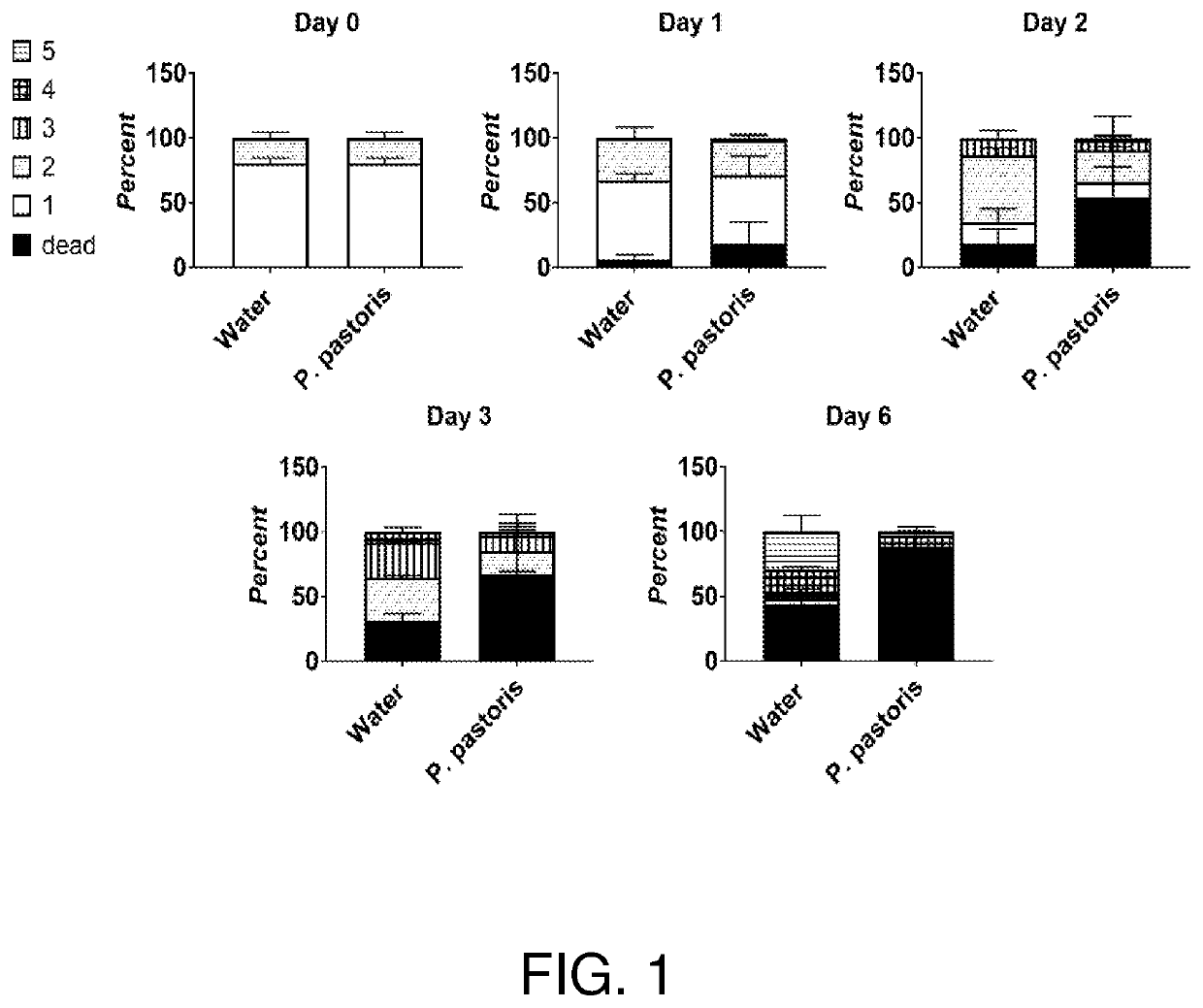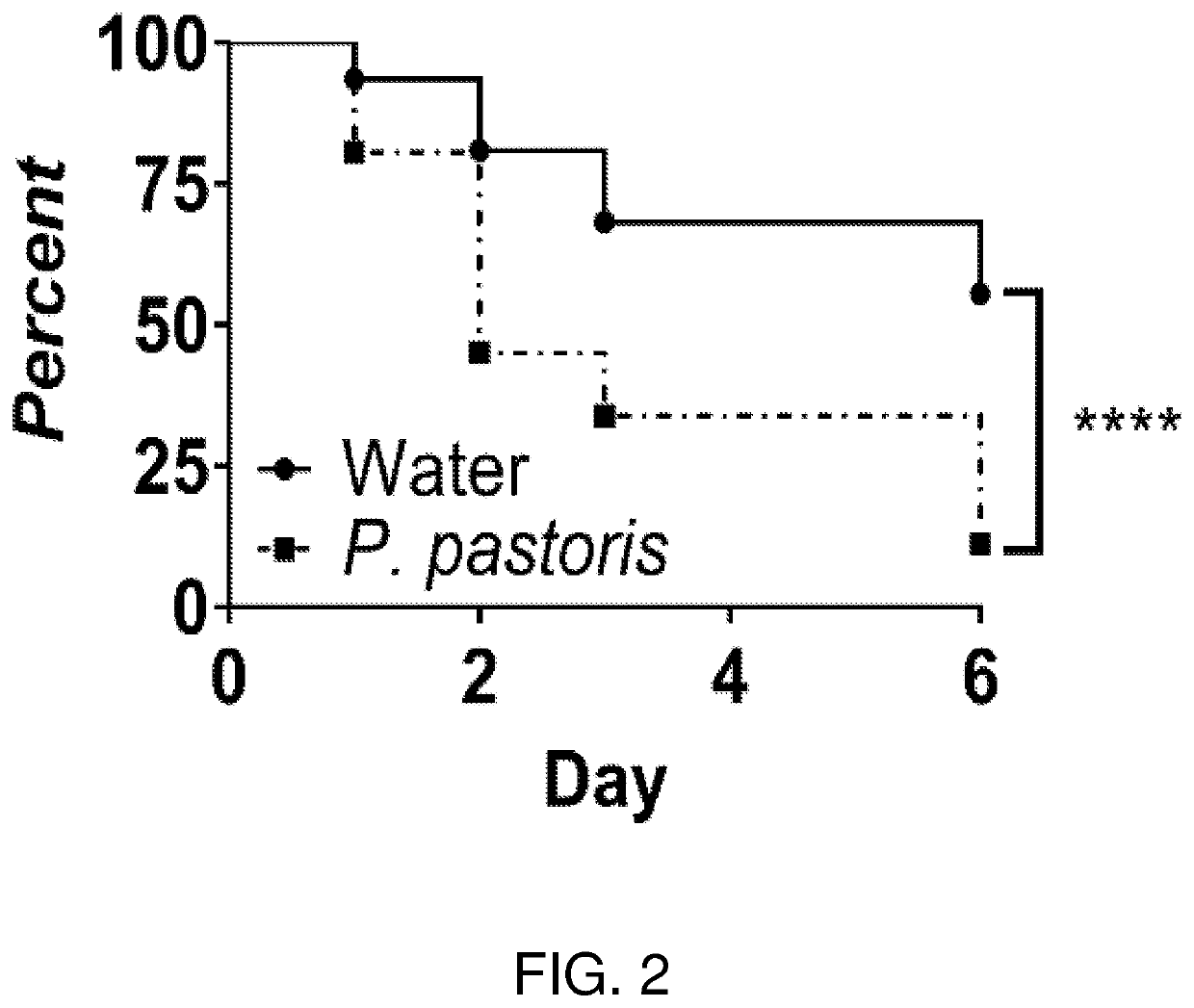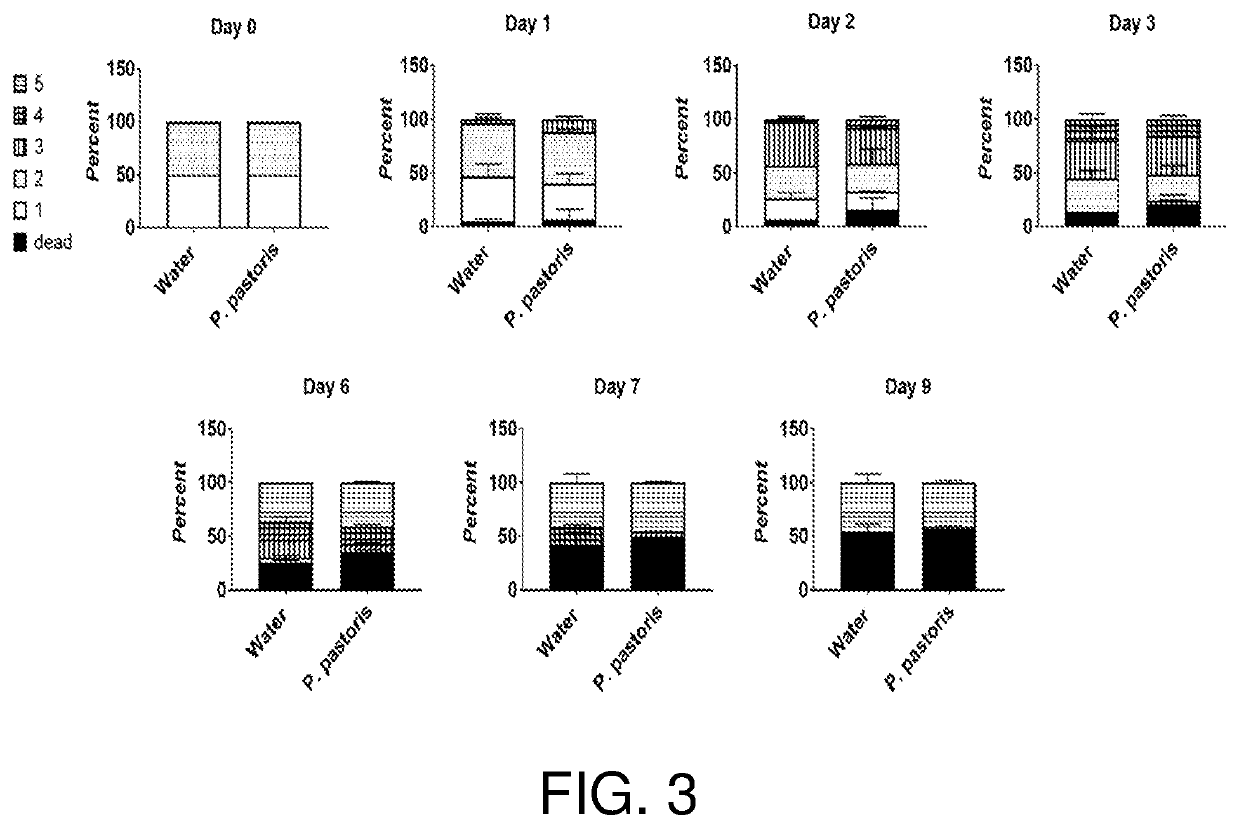Compositions and related methods for modulating endosymbionts
a technology of endosymbionts and compounds, applied in the field of compositions and related methods for modulating endosymbionts, can solve the problems of invertebrates being harmful, and achieve the effects of increasing the level, diversity, and decreasing the level, diversity and/or function of one or mor
- Summary
- Abstract
- Description
- Claims
- Application Information
AI Technical Summary
Benefits of technology
Problems solved by technology
Method used
Image
Examples
example 2
n and Purification of Bcr1 dsRNA
[0418]This Example demonstrates the production and purification of a synthetic dsRNA from a cDNA library.
Experimental Design:
[0419]Bcr1 gene (ACYP132128) is an essential gene for bacteriocyte regulation and function in insects. Bcr1 cDNA is prepared from the larval total RNA described in Example 1 and for Bcr1 dsRNA synthesis prepared by PCR using the primer pairs: Forward 5′-aaactgctgcatggctttct-3′ (SEQ ID NO: 90) and reverse 5′-acaggcctttcaggctttta-3′ (SEQ ID NO: 91). For the target gene region, two separate PCR amplifications are performed. The first PCR amplification introduces a T7 promoter sequence at the 5′ end ((TTAATACGACTCACTATAGGGAGA; SEQ ID NO: 92) of the amplified sense strands. The second reaction incorporates the T7 promoter sequence at the 5′ ends of the antisense strands. The two PCR amplified fragments for each region of the target Bcr1 gene are then mixed in equal amounts, and the mixture is used as a transcription template for dsRN...
example 4
n of Transgenic Grass Expressing Bcr1 dsRNAs
[0426]This Example demonstrates genetic modification and production of Bcr1 dsRNA in a transgenic grass for delivery to aphids.
[0427]Transgenic forage grass blue grama, Bouteloua gracilis, that produces the Bcr1 dsRNA molecules, through expression of a chimeric gene stably-integrated into the plant genome, is produced by microprojectile bombardment, using a system based on the highly chlorophyllous and embryogenic cell line TIANSJ98′ (Aguado-Santacruz et al., Theoretical and Applied Genetics 104(5):763-771, 2002).
[0428]TIANSJ98′ cell line establishment and maintenance: The embryogenic, highly chlorophyllous TIANSJ98′ cell line is obtained from culturing shoot apice-derived green calli in liquid MPC medium as described in (Aguado-Santacruz et al., Plant Cell Rep. 20:131-136, 2001). This cell line is subcultured every 20 days, transferring 1 ml of the cell suspension into 24 ml of fresh MPC medium. The reasons for utilizing the finely disper...
example 5
n of Transgenic Grass Producing colA Bacteriocin
[0434]This Example demonstrates genetic modification and production of the bacteriocyte regulatory peptide Coleoptericin A (colA) in a transgenic grass for delivery to aphids.
[0435]Transgenic forage grass blue grama, Bouteloua gracilis, that produces Coleoptericin A, through expression of a chimeric gene stably-integrated into the plant genome, is produced by microprojectile bombardment, using a system described in Example 4.
[0436]The embryogenic, highly chlorophyllous ‘TIANSJ98’ cell line is subcultured every 20 days, transferring 1 ml of the cell suspension into 24 ml of fresh MPC medium.
Coleoptericin A (colA)(SEQ ID NO: 94)atgacccgcaccatgctgtttctggcgtgcgtggcggcgctgtatgtgtgcattagcgcgaccgcgggcaaaccggaagaatttgcgaaactgagcgatgaagcgccgagcaacgatcaggcgatgtatgaaagcattcagcgctatcgccgctttgtggatggcaaccgctataacggcggccagcagcagcagcagcagccgaaacagtgggaagtgcgcccggatctgagccgcgatcagcgcggcaacaccaaagcgcaggtggaaattaacaaaaaaggcgataaccatgatattaacgcgggctggggc...
PUM
| Property | Measurement | Unit |
|---|---|---|
| Fraction | aaaaa | aaaaa |
| Fraction | aaaaa | aaaaa |
| Fraction | aaaaa | aaaaa |
Abstract
Description
Claims
Application Information
 Login to View More
Login to View More - R&D
- Intellectual Property
- Life Sciences
- Materials
- Tech Scout
- Unparalleled Data Quality
- Higher Quality Content
- 60% Fewer Hallucinations
Browse by: Latest US Patents, China's latest patents, Technical Efficacy Thesaurus, Application Domain, Technology Topic, Popular Technical Reports.
© 2025 PatSnap. All rights reserved.Legal|Privacy policy|Modern Slavery Act Transparency Statement|Sitemap|About US| Contact US: help@patsnap.com



